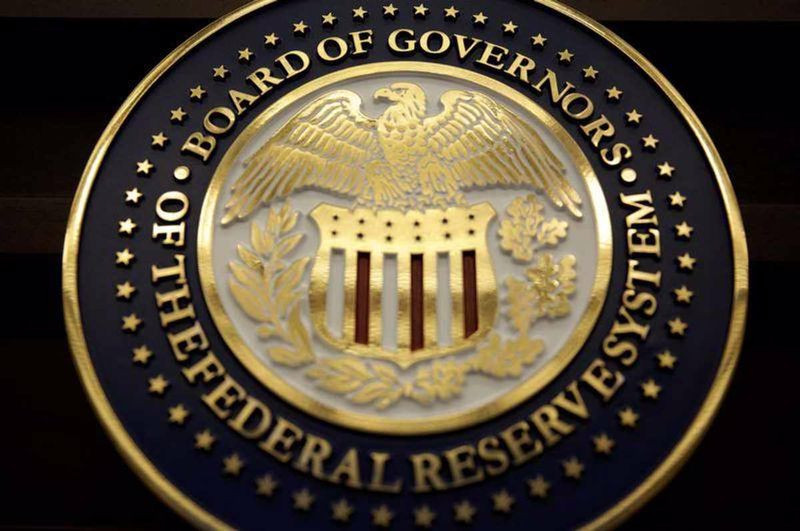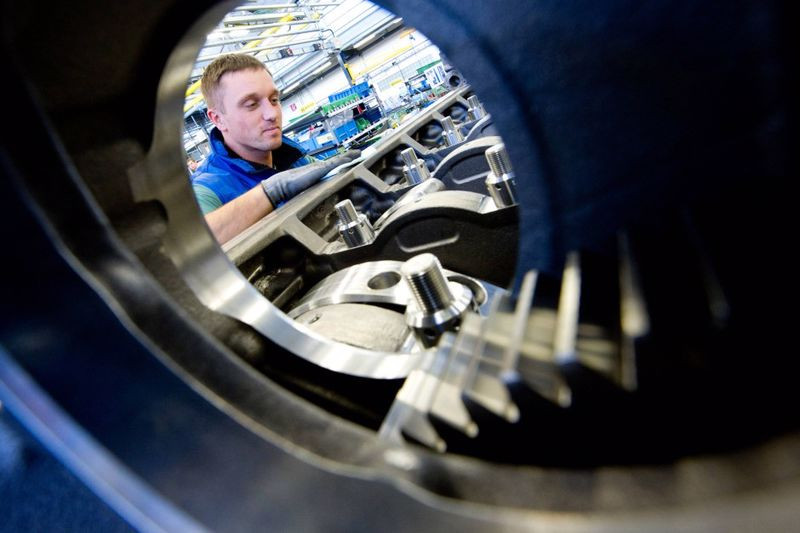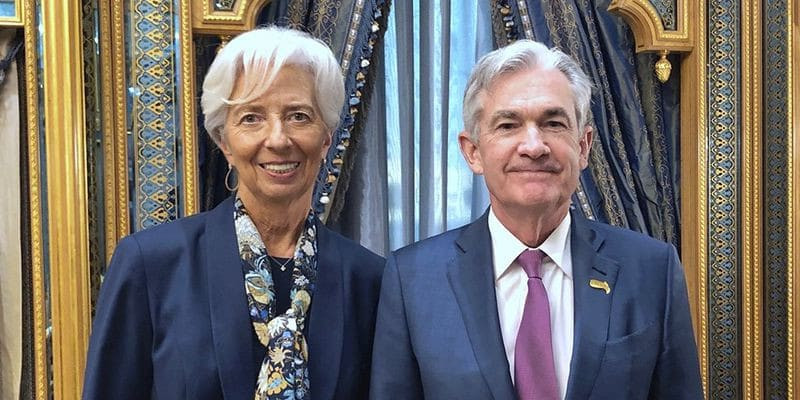
The final working day of last week turned out to be quite volatile for the US currency.
On Friday morning, the greenback held up well thanks to the rise in US Treasury bond yields to multi-year highs.
During the European session, the indicator for 10-year treasuries rose above 4.2%, reaching the highest level since June 2008.
This had a negative impact on the stock markets: S&P 500 futures fell by 0.6%.
Investors played back the comments made by a number of Federal Reserve officials, who confirmed that the central bank is determined to continue aggressively raising rates.
In particular, the head of the Philadelphia Fed, Patrick Harker, said that the US monetary authorities have not yet finished raising the target short-term interest rate amid very high inflation, adding that the interest rate will be above 4% by the end of 2022.
Against this background, USD touched three-week peaks around 113.95, and it seemed that a new visit to the highs of 2022 at 114.70 was just around the corner.
Meanwhile, S&P 500 futures extended losses to 0.8%, signaling a significantly lower opening of Friday trading in New York.
However, subsequent events became a cold shower for dollar bulls.
Firstly, the Japanese authorities seem to have intervened again to buy the yen and sell the dollar on the foreign exchange market.
As a result, the USD/JPY rate dropped sharply after touching a new 32-year peak in the 152 area earlier.
Secondly, The Wall Street Journal reported that after the November meeting, the US central bank is likely to discuss how to convey to the market that the pace of rate hikes in December will be reduced. This has spurred hopes that the Fed's turnaround may be close.

"We are starting to hear that the Fed may at least slow down the aggressive pace of rate hikes. This is the first step towards what we call the "beginning of the end." Over time, the rate hike will slow down, and at some point the Fed will stop to assess the situation in the economy," Edward Jones analysts noted.
San Francisco Fed President Mary Daly echoed this sentiment.
"I think it's time to start talking about slowing down the pace of policy tightening, and start planning for it," Daly said. It is very important to do this because the Fed does not want to tighten policy excessively, just as it does not want the rate hike to be insufficient to contain inflation, she said.
Following the WSJ message and Daly's comments, the chances that the US central bank will raise the rate by another 75 bps in December fell to 50.5% from 75.4% on Thursday, and the probability of a 50 bps hike increased to 47.4% from 24.2%.
This led to the fact that the US stock market revived, and the yield of treasuries decreased, pulling down the dollar, which sank by almost 1% against its main competitors, including the euro. The USD index ended the last five days near 111.80.
Meanwhile, key Wall Street indicators rose by more than 2% at the end of trading on Friday, ending the week with the highest rise since June. In particular, the S&P 500 gained 2.37%, jumping to 3,752.75 points. The weekly increase in the index was 4.7%.
Tracking the decline of the dollar on a broad front amid a rebound in stocks, on Friday the EUR/USD pair rose by almost 150 points and finished around 0.9860, strengthening by about 0.8% during the day and adding more than 1.4% at the end of the week.
In the early hours of the Asian session on Monday, the main currency pair rose to the highest level in two weeks around 0.9900. Having failed to overcome this mark, EUR/USD turned downward, and the fall continued at the beginning of the European session amid weak data on business activity in the eurozone.
The composite purchasing managers' index from S&P Global in the currency bloc, which is considered a good indicator of the overall state of the economy, fell to 47.1 points in October from 48.1 in September, which was lower than the expected 47.5 points. The value of the indicator has become the lowest since November 2020.

"The eurozone economy looks set to contract in the fourth quarter, given the intensifying losses in the manufacturing segment and the deteriorating demand picture seen in October, which reinforces speculation that a recession is becoming increasingly inevitable," S&P Global said.
The EUR/USD pair was able to recoup most of the previously incurred losses only after the US statistical data showed that the composite business activity index (PMI) in the country decreased to 47.3 points in October from 49.5 points a month earlier. Analysts expected the indicator to decrease only to 49.3 points.
These data did not allow the greenback to gain momentum and forced it to retreat to 111.80 from the local highs recorded earlier in the session in the area of 112.40 points.
The protective dollar had difficulty attracting bulls as U.S. stocks continued their rebound on Monday, which began on Friday.
Key Wall Street indexes were growing steadily on Monday, as investors await the financial results of large technology companies for the third quarter.
A total of 20% of S&P 500 companies have already published reports for the past quarter and, according to FactSet, 72% of the reported profits exceeded market forecasts. However, this is below the five-year average of 77%.
The 21% market decline since the beginning of the year, which has made many stocks attractive for purchases, is now mainly playing on the side of the bulls.
However, the recovery looks shaky so far, and the current rebound could easily come to naught. After all, the most that the market can count on now is a reduction in the pace of tightening of the Fed's monetary policy. Therefore, investors should be prepared for the fact that in the coming weeks the S&P 500 may move to update the lows.
"We are waiting for testing of key resistances at the level of 3797-3810 – the current October high, 38.2% correction of the fall of August-October and the downward trend since August. We continue to expect a more protracted consolidation/recovery phase, but a breakthrough above 3810 is necessary to indicate at least a short-term basis, but also a more consistent recovery to test the 63-day average, which is currently at 3931," Credit Suisse strategists said.
"Support is observed at the level of 3736-3731 before the 13-day exponential average at the level of 3697. A breakthrough below may lead to a retest of the 3647-3639 level," they added.

The greenback opens the new week with a slight weakening, but decent US GDP growth in the third quarter and high inflation rates, which will be released later this week, should attract interest in the USD on the decline, according to ING.
"The calendar of economic data for the United States this week should support the hawkish position of the Fed. The US GDP for the third quarter should be about 2% year-on-year, and the September indicators (both basic and basic) of the PCE price deflator should grow and go even further from the forecast levels of the Fed at the end of the year," the bank's specialists noted.
"High volatility in the foreign exchange market is expected to remain, and the USD index is likely to fluctuate in the range of 111.50-112.50," they said.
As for the EUR/USD pair, it could not make the most of the dollar's decline, ING strategists say. They believe that it will be difficult for the pair to overcome the 0.9950 barrier.
"The recovery of the EUR/USD pair has been rather sluggish and can be best described as a consolidation of the bear market. For reference, 0.9950 is now probably a significant intraday resistance that marks the top of this year's bearish channel. Today we received another weak set of PMI releases for the eurozone. We doubt that the ECB rate hike by 75 bps this week will be a decisive factor for EUR/USD," ING said.
The European Central Bank will hold a regular meeting on Thursday at which it is expected to raise the key interest rate by 75 basis points to 2%, but this is already fully embedded in the quotes and does not provide significant support for the euro.
Investors are primarily interested in whether the central bank will signal a further such step in December.
If ECB President Christine Lagarde promises to reduce the step of tightening monetary policy at the next meetings, the single currency will be under pressure.
According to analysts at Scotiabank, the world's most popular currency pair may fall below the level of 0.9800.
"Intraday growth to the 0.9900 area could not give additional impetus to testing the key trend resistance at 0.9940. The 40-day moving average at 0.9866 is still holding back the growth of EUR/USD, which may lead to a resumption of the fall to test the 0.9750 mark before the key short-term support of 0.9700-0.9710," they noted.
According to experts, a reversal of the EUR/USD trend will occur only when the Fed clearly indicates its unwillingness to implement an aggressive rate hike, and the ECB will continue its policy of tightening. However, this should not be expected until December.





















